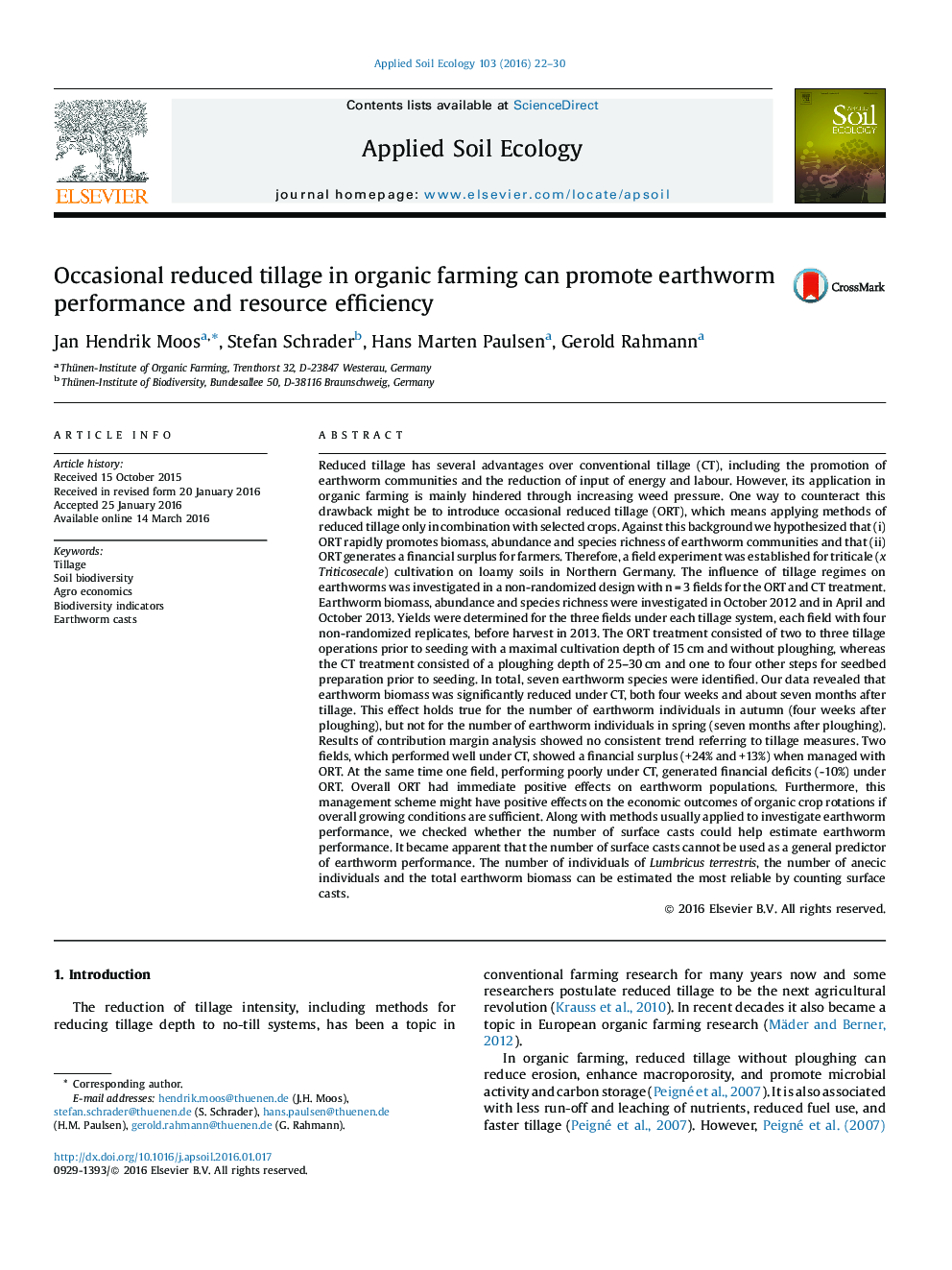| کد مقاله | کد نشریه | سال انتشار | مقاله انگلیسی | نسخه تمام متن |
|---|---|---|---|---|
| 4381780 | 1617780 | 2016 | 9 صفحه PDF | دانلود رایگان |
• Occasional reduced tillage in organic farming is beneficial for earthworm communities.
• Yields of triticale (x Triticosecale) can be stable in organic farming under occasional reduced tillage.
• Abundance of adult Lumbricus terrestris individuals can be predicted by counting earthworm surface casts.
Reduced tillage has several advantages over conventional tillage (CT), including the promotion of earthworm communities and the reduction of input of energy and labour. However, its application in organic farming is mainly hindered through increasing weed pressure. One way to counteract this drawback might be to introduce occasional reduced tillage (ORT), which means applying methods of reduced tillage only in combination with selected crops. Against this background we hypothesized that (i) ORT rapidly promotes biomass, abundance and species richness of earthworm communities and that (ii) ORT generates a financial surplus for farmers. Therefore, a field experiment was established for triticale (x Triticosecale) cultivation on loamy soils in Northern Germany. The influence of tillage regimes on earthworms was investigated in a non-randomized design with n = 3 fields for the ORT and CT treatment. Earthworm biomass, abundance and species richness were investigated in October 2012 and in April and October 2013. Yields were determined for the three fields under each tillage system, each field with four non-randomized replicates, before harvest in 2013. The ORT treatment consisted of two to three tillage operations prior to seeding with a maximal cultivation depth of 15 cm and without ploughing, whereas the CT treatment consisted of a ploughing depth of 25–30 cm and one to four other steps for seedbed preparation prior to seeding. In total, seven earthworm species were identified. Our data revealed that earthworm biomass was significantly reduced under CT, both four weeks and about seven months after tillage. This effect holds true for the number of earthworm individuals in autumn (four weeks after ploughing), but not for the number of earthworm individuals in spring (seven months after ploughing). Results of contribution margin analysis showed no consistent trend referring to tillage measures. Two fields, which performed well under CT, showed a financial surplus (+24% and +13%) when managed with ORT. At the same time one field, performing poorly under CT, generated financial deficits (-10%) under ORT. Overall ORT had immediate positive effects on earthworm populations. Furthermore, this management scheme might have positive effects on the economic outcomes of organic crop rotations if overall growing conditions are sufficient. Along with methods usually applied to investigate earthworm performance, we checked whether the number of surface casts could help estimate earthworm performance. It became apparent that the number of surface casts cannot be used as a general predictor of earthworm performance. The number of individuals of Lumbricus terrestris, the number of anecic individuals and the total earthworm biomass can be estimated the most reliable by counting surface casts.
Journal: Applied Soil Ecology - Volume 103, July 2016, Pages 22–30
